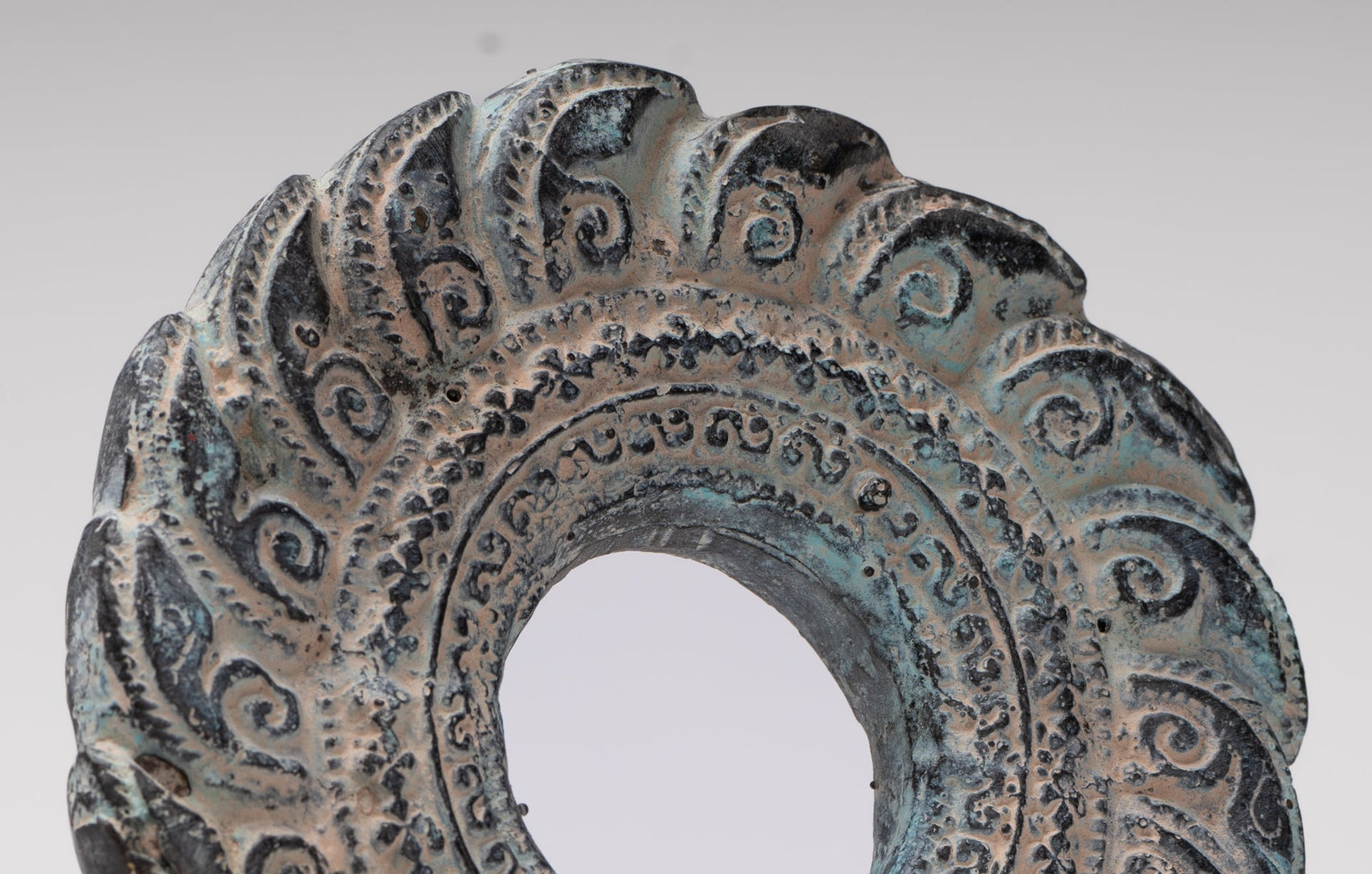
The Chakram: India’s Iconic Throwing Weapon
The chakram, also known as the “disk” or “circular blade,” is one of the most fascinating weapons to emerge from ancient India. With its unique design and historical significance, the chakram occupies a special place in the annals of Indian martial arts and culture.
This blog post explores the origins, construction, usage, and enduring legacy of this remarkable weapon.
Origins of the Chakram
The word “chakram” is derived from the Sanskrit term “chakra,” meaning “circle” or “wheel.” While the chakram’s exact origins remain uncertain, references to circular weapons can be found in ancient Indian texts, sculptures, and art:
-
Vedic References:
-
The chakra is mentioned in the Rigveda as a symbol of divine power and protection.
-
In Hindu mythology, the Sudarshana Chakra is the celestial weapon of Lord Vishnu, embodying divine authority and precision.
-
-
Historical Usage:
-
The chakram became a practical weapon during the early medieval period, particularly among the Sikh warriors of Punjab.
-
Its use spread throughout the Indian subcontinent, favored for its portability and effectiveness.
-
Design and Construction
The chakram is a circular metal weapon, typically made of steel or brass. Its design is both functional and elegant:
-
Structure:
-
The chakram consists of a flat, circular disk with a sharpened outer edge.
-
It usually measures 12 to 30 centimeters in diameter, though variations exist.
-
-
Weight and Balance:
-
Proper weight distribution ensures the weapon’s aerodynamic properties, allowing it to fly with stability and precision.
-
-
Decorative Elements:
-
Many chakrams were intricately adorned with engravings, showcasing the craftsmanship of their makers.
-
Methods of Usage
The chakram’s unique design made it a versatile weapon, capable of being used in multiple ways:
-
Throwing Technique:
-
Warriors would throw the chakram with a flick of the wrist, ensuring it spun as it traveled through the air. This spin stabilized the weapon, enabling it to cover distances of up to 50 meters.
-
-
Hand-to-Hand Combat:
-
When not thrown, the chakram could be used as a handheld cutting tool in close-range combat.
-
-
Mounted Combat:
-
Cavalry soldiers often carried chakrams, using them to attack opponents from horseback.
-
-
Defensive Applications:
-
The chakram could also serve as a defensive tool, deflecting blows or intimidating enemies.
-
The Chakram in Sikh Martial Tradition
The Sikh warriors of Punjab, particularly during the 17th and 18th centuries, elevated the chakram to new prominence. Integral to the martial art of Gatka, the chakram was both a weapon and a symbol of divine justice:
-
The Nihang Order:
-
The Nihang, a warrior sect of Sikhs, carried chakrams as part of their traditional attire.
-
Chakrams were often worn on turbans or slung over the shoulder for easy access.
-
-
Spiritual Significance:
-
For the Sikhs, the chakram symbolized the eternal and all-encompassing nature of God.
-
The Chakram in Mythology and Popular Culture
The chakram holds a special place in Indian mythology and folklore:
-
Sudarshana Chakra:
-
The most famous mythological chakram is the Sudarshana Chakra of Lord Vishnu, described as a weapon of immense power and precision.
-
In legends, Vishnu used the Sudarshana Chakra to vanquish demons and restore cosmic order.
-
-
Cultural Representation:
-
The chakram has appeared in Indian epics, temple carvings, and modern media, symbolizing strength and protection.
-
-
Global Recognition:
-
The chakram gained international fame through depictions in films, video games, and TV series, such as the weapon used by the character Xena in "Xena: Warrior Princess."
-
Decline and Legacy
With the advent of firearms, traditional weapons like the chakram gradually fell out of use. However, its legacy endures:
-
Martial Arts Revival:
-
The chakram is still practiced in martial arts schools that preserve traditional techniques, such as Gatka and Kalaripayattu.
-
-
Symbol of Heritage:
-
The chakram remains a cultural symbol, celebrated in festivals, museums, and historical reenactments.
-
-
Contemporary Appeal:
-
Modern reproductions of chakrams are popular among collectors, martial artists, and enthusiasts of historical weaponry.
-
Conclusion
The chakram is more than just a weapon; it is a testament to the ingenuity and artistry of ancient Indian civilization.
From its mythological associations to its practical applications in warfare, the chakram embodies a blend of spiritual symbolism and martial prowess.
While it may no longer dominate the battlefield, its circular form continues to inspire awe, reminding us of the rich heritage and enduring wisdom of India’s past.


















